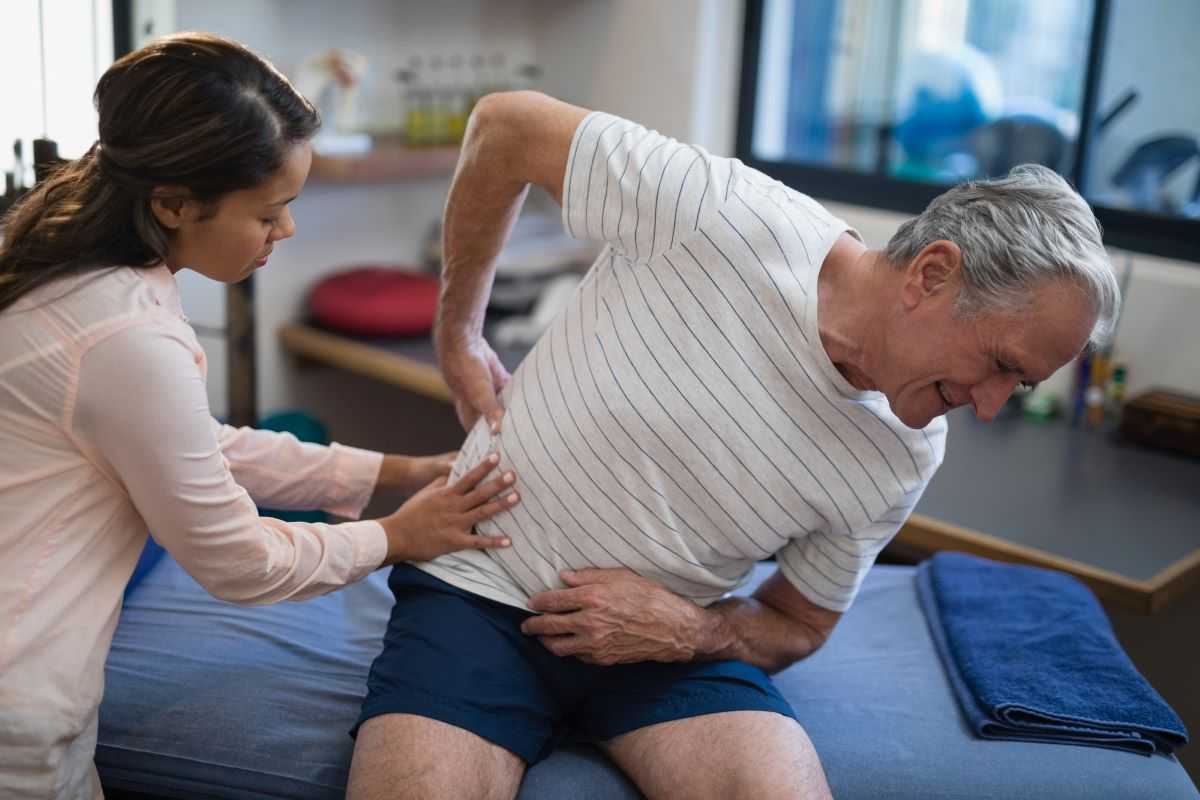
Back pain can affect anyone regardless of age, gender, lifestyle, or overall health. Studies show that leading a healthier lifestyle that includes eating a balanced diet, avoiding smoking and drinking alcohol, and regular exercise can reduce the chance of back problems. However, an unexpected accident or general wear and tear can cause back pain for even the healthiest people.
In this article, we will examine the various causes of lower back pain and the possible cures, including drugs, treatments, lifestyle changes, and surgeries.
What Can Cause Lower Back Pain?
There are many different reasons why a person may be experiencing back pain. This can range from a mild strain that eases in a short space of time to potentially serious conditions that require immediate medical attention.
Spinal Stenosis
Spinal stenosis, common in the neck (cervical stenosis) and lower back (lumbar stenosis) is a common condition that involves the narrowing of the spinal canal. This narrowing then causes pressure on the nerves and spinal cord which can cause pain and other symptoms, such as numbness or a tingling sensation in the legs.
There is no cure for spinal stenosis but there are treatments that can relieve the symptoms, while surgery can also create space in the spinal canal so the nerves and spinal cord are no longer being impinged. Common treatments for spinal stenosis include nonsteroidal, anti-inflammatory drugs (NSAIDs), physical therapy, over-the-counter and prescription painkillers, pain-killing injections, and opioids in extreme cases.
Herniated Disc
A herniated disc is a term for when one of the cushioned discs that sit between the vertebrae ruptures. These discs have a soft nucleus which is almost jelly-like, protected by a thicker layer called the annulus. The annulus can wear down over time or rupture/ tear due to an injury, causing the nucleus to protrude.
Sometimes, a person can suffer a herniated disc, sometimes referred to as a slipped disc without even realizing it. However, many people may experience pain, numbness, or weakness in the affected area, or the arms and legs.
To cure a herniated disc, a person may require an operation known as a discectomy which removes the ruptured part of the disc. A doctor would likely recommend treatments such as massage therapy, ice/ heat packs, gentle exercise, stretching, and electrical muscle stimulation before any surgery is considered.
Spondylolisthesis
Spondylolisthesis is a condition that involves one of the vertebrae in the spine slipping forward and coming into contact with the spine and nerves, similar to stenosis. This can cause pain, sometimes quite severe. It can occur in any part of the spine but is most common in the lumbar region (lower back).
Treatments for spondylolisthesis are the same as those that are recommended to treat spinal stenosis.
Osteoarthritis
Osteoarthritis is a disease that leads to the degeneration of the joints, caused by the tissues in the joint breaking down over time. It occurs due to years of wear and tear and is often seen in older adults. This is the most common form of arthritis. As well as the lower back, people can suffer osteoarthritis in the neck, hips, knees, and hands.
The symptoms can often be mild and have little impact on a person’s daily life, but some people can experience significant pain and suffer from mobility issues.
Sciatica
Sciatica is a broad term for pressure being applied to the sciatic nerve. This can be caused by a wide range of issues. The sciatic nerve runs from the lower back and down the back of both legs. If pressure is applied to it, symptoms can include pain, weakness, numbness, or a tingling sensation in the lower back and/ or in the legs.
Potential causes of sciatica include spinal stenosis, a herniated disc, spondylolisthesis, a tumor, or a pelvic fracture. Sciatica is most common in men who are aged between 30 and 50.
To ease the symptoms of sciatica the underlying condition needs to be diagnosed and treated. A person may also take over-the-counter pain relievers such as ibuprofen or apply ice/ heat packs to relieve any pain. Anyone suffering from sciatica should avoid prolonged bed rest and strenuous back exercise.
Fractures
Fractures caused by an injury such as those suffered in a car accident or during physical sports can also cause lower back pain. Fractures may also be caused by conditions such as osteoporosis which weaken the bones, making them brittle.
A doctor will typically recommend non-surgical treatments such as medication, back braces, and certain exercises. Non-steroidal anti-inflammatory drugs may also be prescribed to relieve any pain.
Strains
Back pain may also be caused by a simple strain which could occur if a person performs an unnatural motion such as a sudden twist of the spine. A strain will typically clear up naturally in a few days to a week. A person may also take paracetamol or ibuprofen to help manage the pain.
Spinal Fusion: Is it a safe option?
Spinal fusion is often performed after a laminectomy or discectomy which removes part of the spine. Laminectomies remove part of the vertebrae (the lamina), while discectomies remove part of the vertebral disc if it is damaged or ruptured. Fusion surgery fuses the affected vertebrae so they can no longer move, providing stability to the spine.
Unfortunately, spinal fusion surgery can limit a person’s range of motion, making it difficult to perform basic movements such as bending over. In terms of the lower back, spinal fusion of the l4 l5 section can significantly reduce a person’s mobility and flexibility.
As a result, many doctors now prefer the use of modern techniques such as mechanical spinal devices which mimic the natural movement of the spine, ensuring the patient retains a full range of motion. Furthermore, these devices also offer faster healing times when compared to spinal fusion.
Thank you for reading. We hope this guide has helped to shed some light on the possible causes of back pain and provided insights into the available options to cure them.
Follow me down the rabbit hole!
I'm Alice and I live with a dizzying assortment of invisible disabilities, including ADHD and fibromyalgia. I write to raise awareness and end the stigma surrounding mental and chronic illnesses of all kinds.








